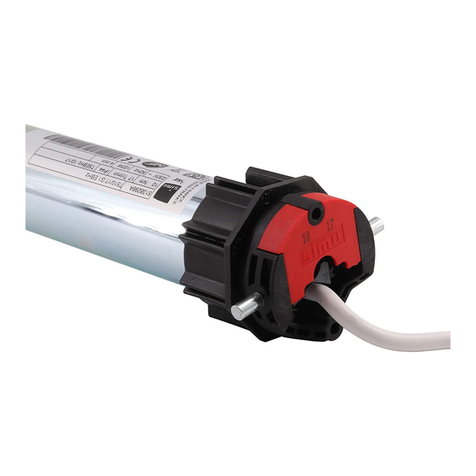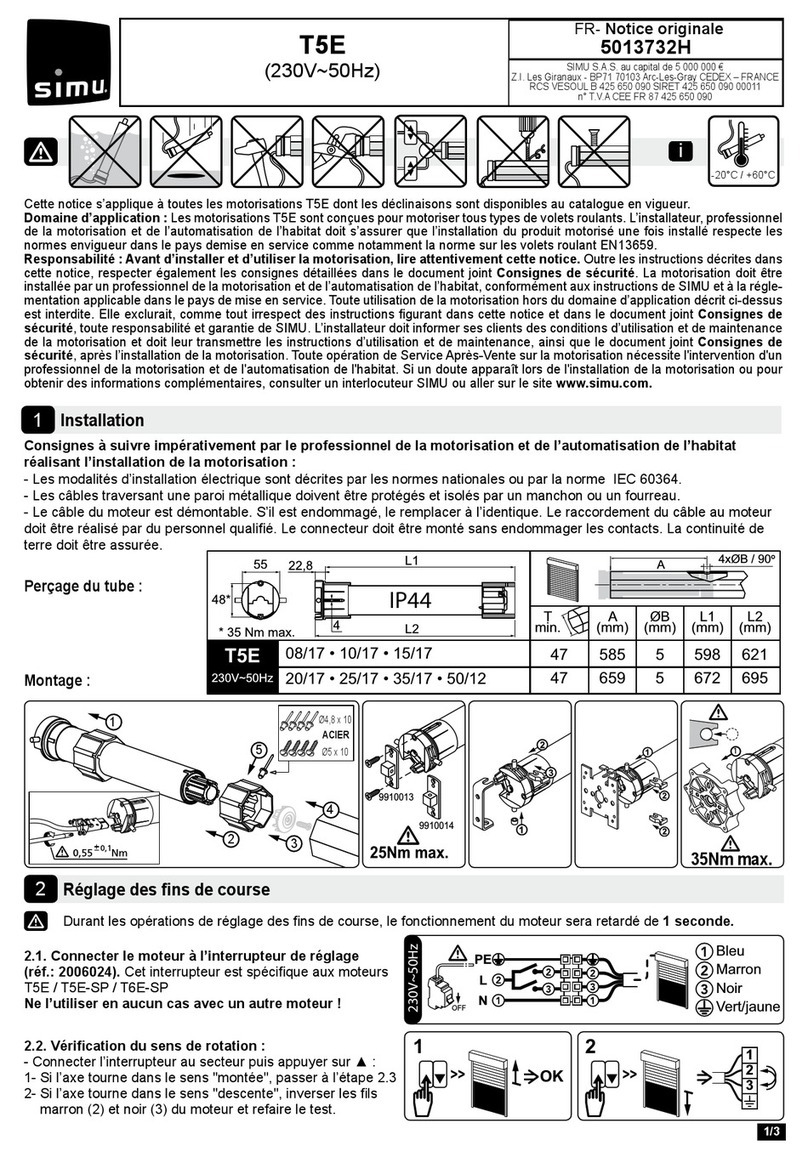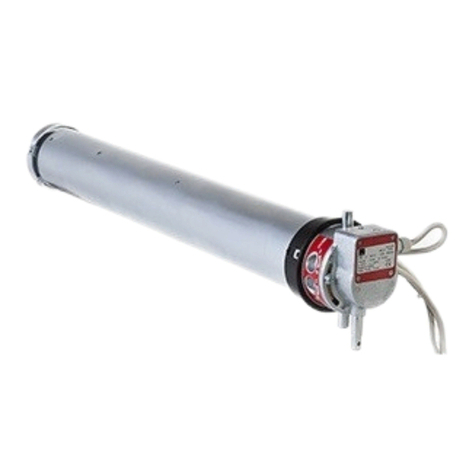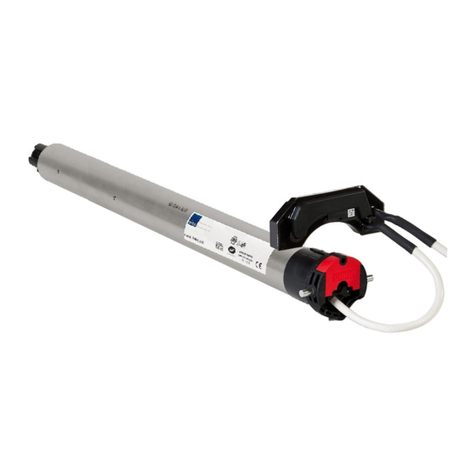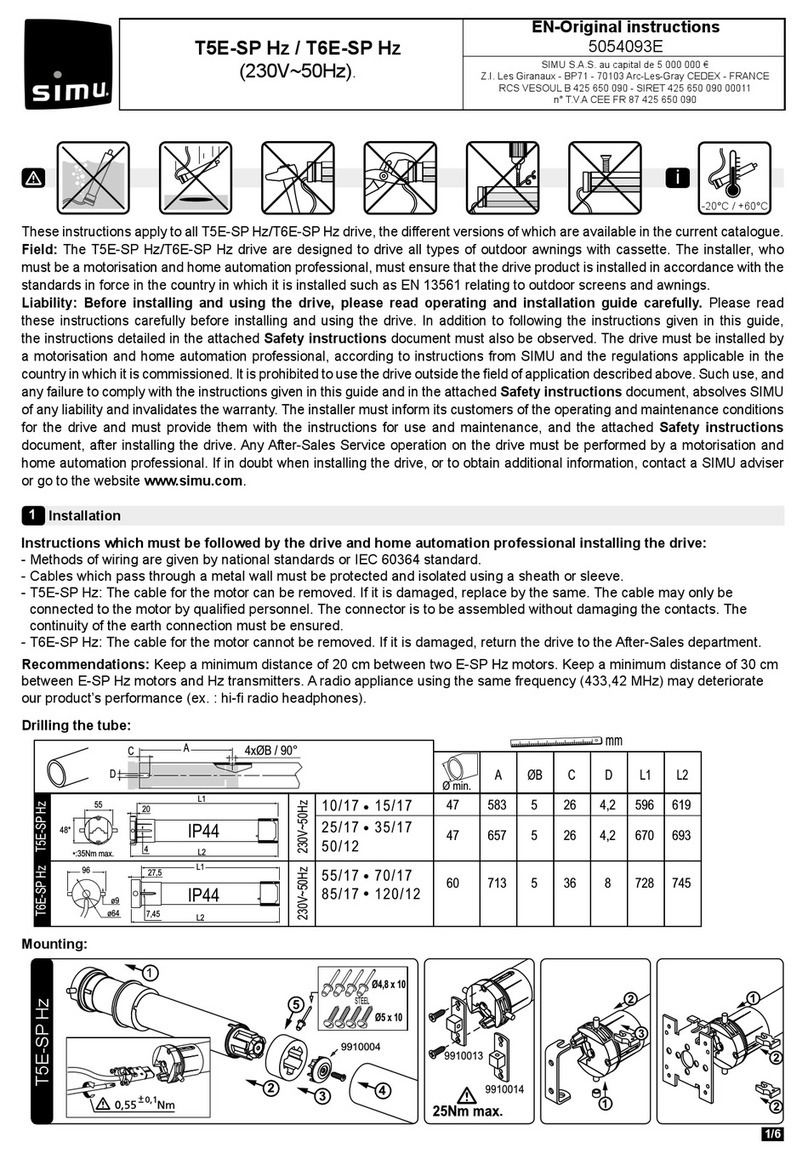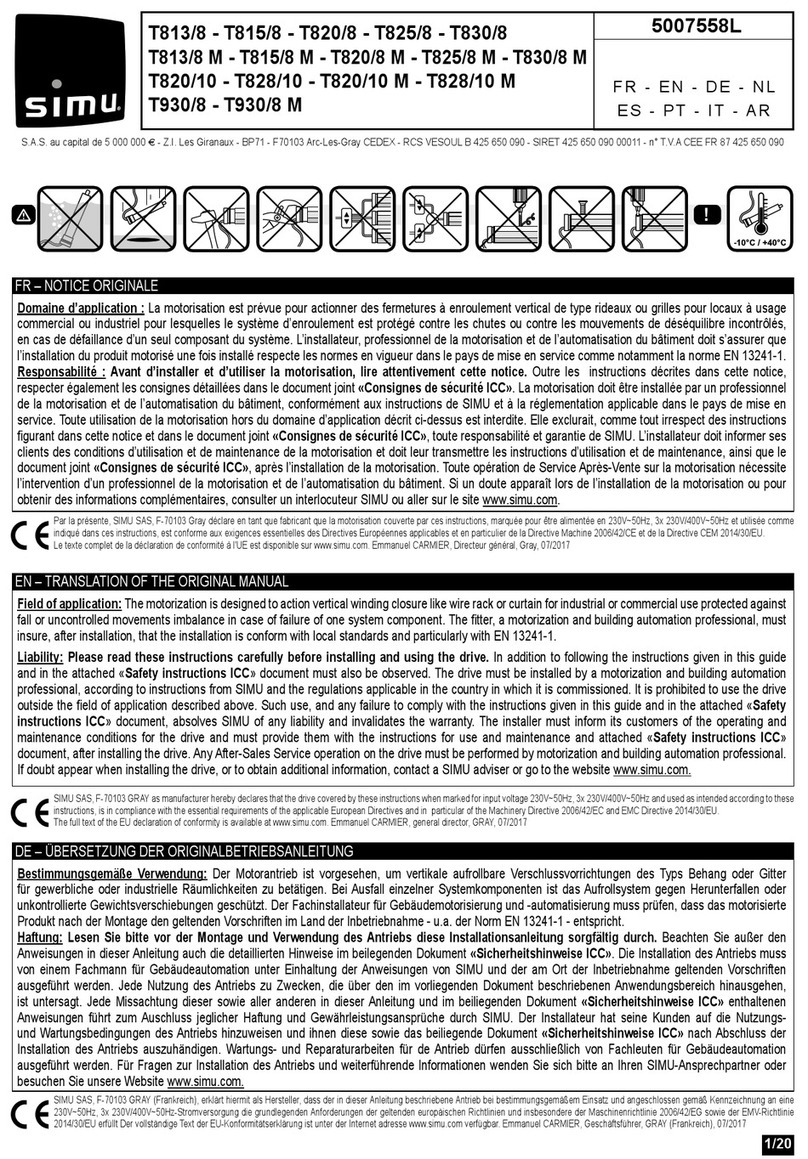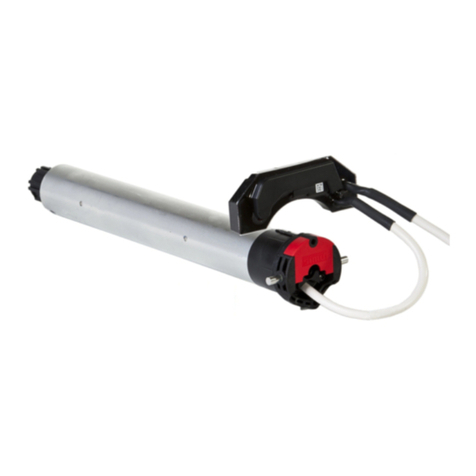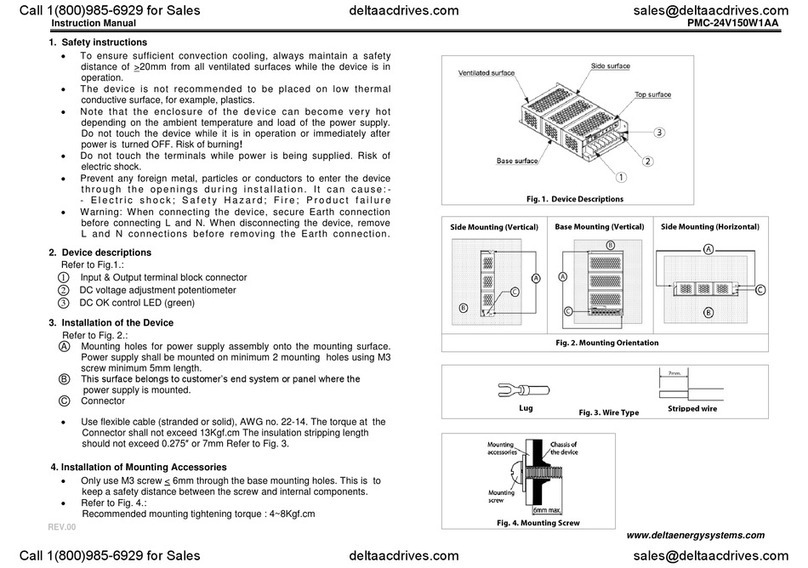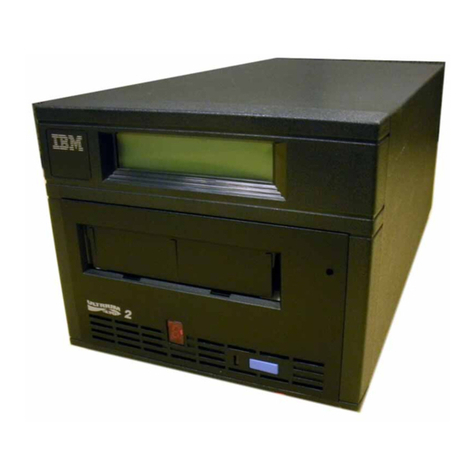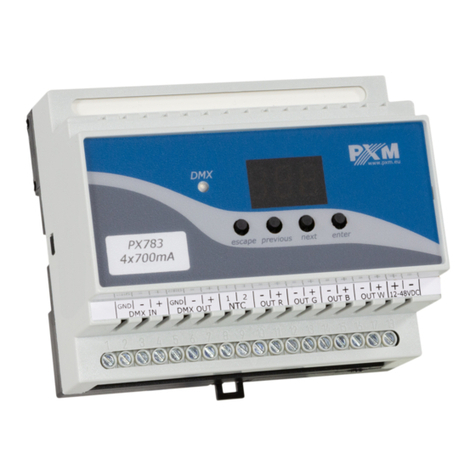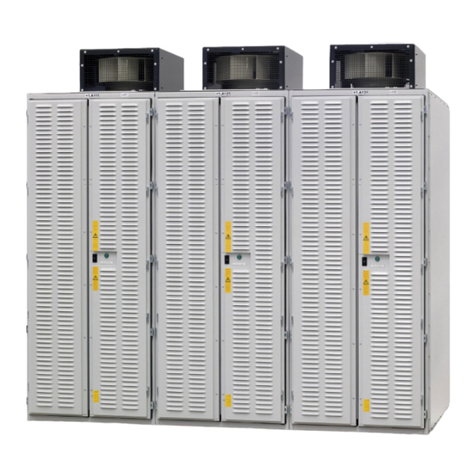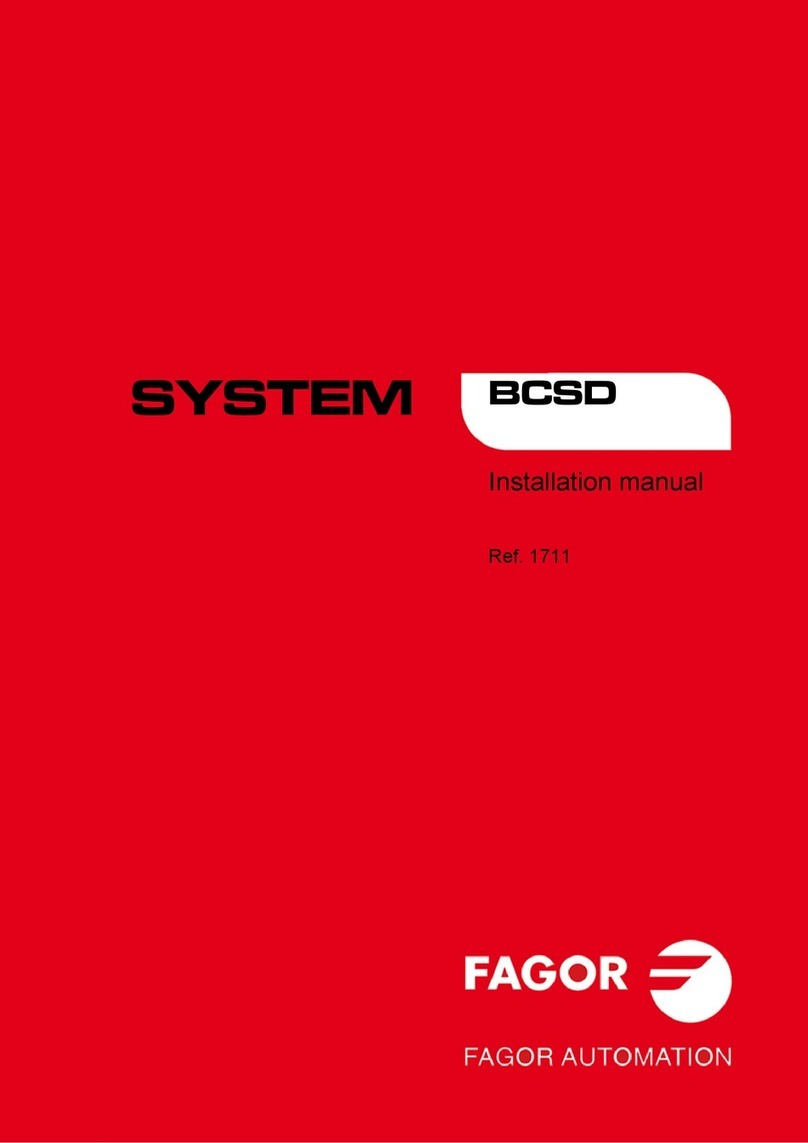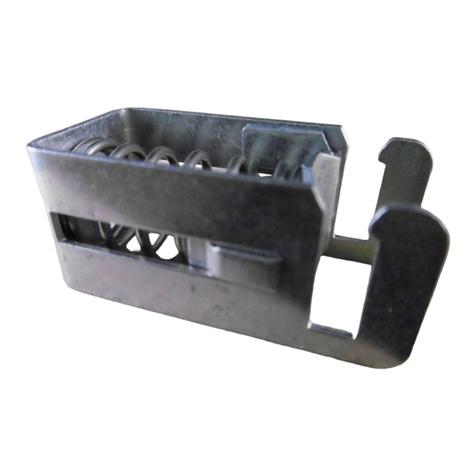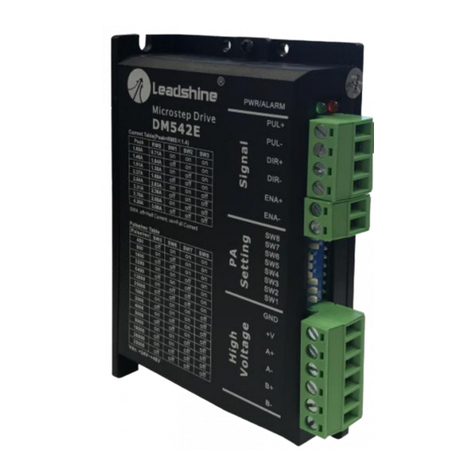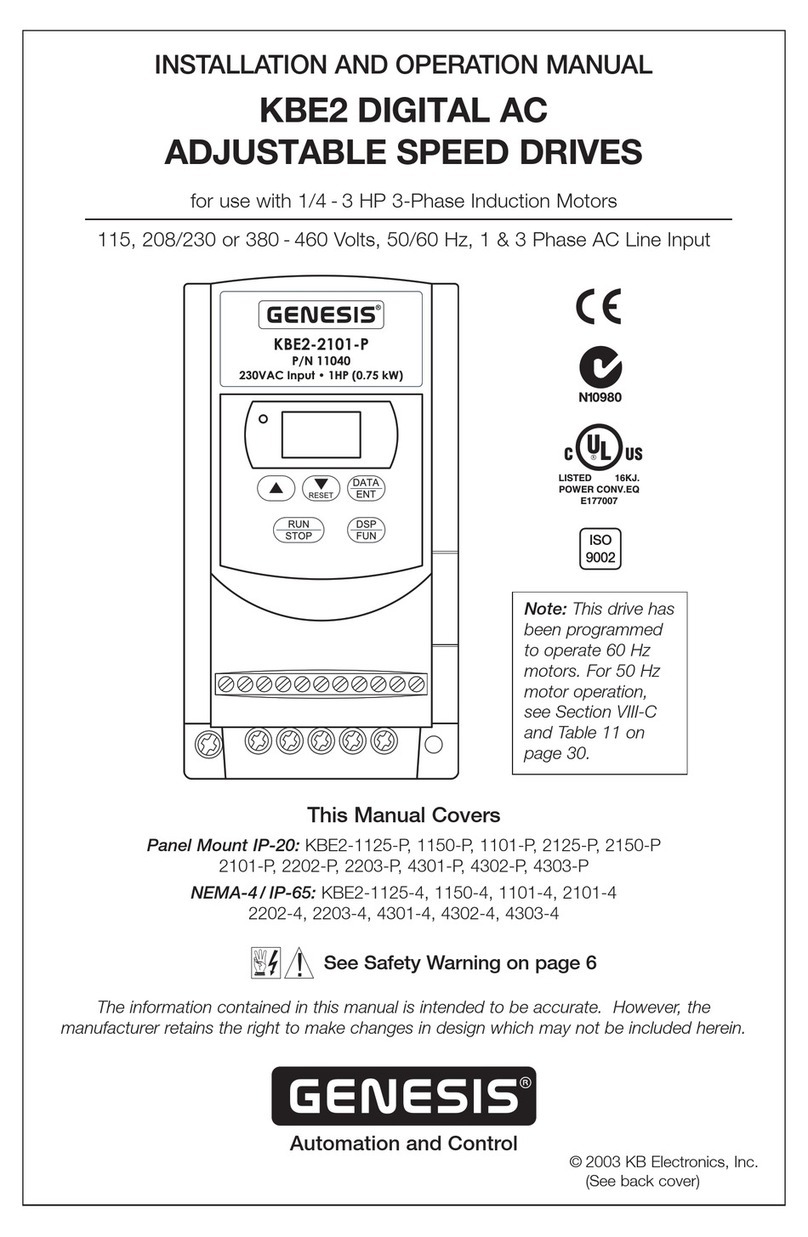Simu T3.5EBHz User manual

1/8FR
PRÉSENTATION DU SYSTÈME AUTOSUN 2 BHZ
i
-20°C / +60°C
i
SIMU S.A.S. au capital de 5 000 000 € - Zone Industrielle Les Giranaux - 70100 ARC-LÈS-GRAY - FRANCE - RCS VESOUL B 425 650 090 - SIRET 425 650 090 00011 - n° T.V.A CEE FR87 425 650 090
Cette notice s’applique à toutes les motorisations T3.5EBHZ DC dont les déclinaisons sont disponibles au catalogue
en vigueur.
Domaine d’application : Les motorisations T3.5EBHZ DC sont conçues pour motoriser tous types de volets
roulants. L’installateur, professionnel de la motorisation et de l’automatisation de l’habitat doit s’assurer que
l’installation, du produit motorisé une fois installé, respecte les normes en vigueur dans le pays de mise en service
comme notamment la norme sur les volets roulants EN13659.
Responsabilité : Avant d’installer et d’utiliser la motorisation, lire attentivement cette notice. Outre
les instructions décrites dans cette notice, respecter également les consignes détaillées dans le document
joint Consignes de sécurité. La motorisation doit être installée par un professionnel de la motorisation et de
l’automatisation de l’habitat, conformément aux instructions de SIMU et à la réglementation applicable dans le
pays de mise en service. Toute utilisation de la motorisation hors du domaine d’application décrit ci-dessus est
interdite. Elle exclurait, comme tout irrespect des instructions gurant dans cette notice et dans le document joint
Consignes de sécurité, toute responsabilité et garantie de SIMU. L’installateur doit informer ses clients des
conditions d’utilisation et de maintenance de la motorisation et doit leur transmettre les instructions d’utilisation et
de maintenance, ainsi que le document joint Consignes de sécurité, après l’installation de la motorisation. Toute
opération de Service Après-Vente sur la motorisation nécessite l’intervention d’un professionnel de la motorisation
et de l’automatisation de l’habitat. Si un doute apparaît lors de l’installation de la motorisation ou pour obtenir des
informations complémentaires, consulter un interlocuteur SIMU ou aller sur le site www.simu.com.
T3.5EBHZ DC
(12VDC)
FR- NOTICE ORIGINALE
5148477A
Le moteur T3.5EBHZ DC fait partie du système AUTOSUN 2 BHZ dont les références sont disponibles au
catalogue en vigueur. C’est un système de motorisation autonome fonctionnant à l’énergie solaire. L’énergie
électrique fournie par le panneau solaire est stockée dans la batterie du système. Ce système est prévu pour
fonctionner dans les pays suivants : France, Allemagne, Grande Bretagne, Belgique, Pays Bas, République
Tchèque, Pologne, Irlande, Espagne, Portugal, Italie, Grèce, Suisse, Luxembourg, Danemark, Autriche,
Hongrie, Australie, et Turquie. Pour toute autre zone, veuillez nous contacter.
Le système AUTOSUN 2 BHZ est composé de :
1- Moteur 12V T3.5EBHZ DC, 3, 6 ou 10 Nm.
2- Panneau solaire -12V : «3.2W SOLAR PANEL» ; 3,2W/
Voc : 21V/ Isc : 196 mA.
3- Batterie NiMh - 12V/ 2,2Ah :
- “Naked battery autosun 2”
ou
- “Batterie coque equip.”
En option :
4- Chargeur de batterie réf.: 9020638. Permet d’eectuer
une recharge rapide de la batterie ( 3) du système
AUTOSUN 2 BHZ (voir §10).
5- Support panneau solaire réf.: 9019683
6- Rallonge pour panneau solaire 5m réf. : 9019722
i
• Le poids du volet roulant doit respecter les abaques déterminés pour chacun des moteurs. Les hauteurs
maximum enroulables sont : 1600 mm pour un moteur de 3Nm, 2300 pour un 6Nm et 2500 pour un 10Nm.
• Le panneau solaire doit toujours être positionné de manière à être exposé le plus possible au rayonnement du soleil.
• Autonomie du système sans recharge : 45 jours à raison de 2 cycles / jour (1 cycle = 1 montée et 1 descente),
avec une batterie neuve chargée à 100% et à 20°C.
Pour les années avec un ensoleillement exceptionnellement faible, se servir du chargeur (
4
) pour recharger
la
batterie du système AUTOSUN 2 BHZ.
1
2
3
+ +
4
Réf. 9020638
Réf. 9019683
Réf. 9019722
6
5

2/8 FR
INSTALLATION
2
Consignes à suivre impérativement par le professionnel de la motorisation et de l’automatisation de
l’habitat réalisant l’installation de la motorisation :
- Si la motorisation est utilisée en extérieur, installer le câble dans un conduit résistant aux UV, par exemple
sous goulotte.
- Les modalités d’installation électrique sont décrites par les normes nationales ou par la norme IEC 60364.
- Les câbles traversant une paroi métallique doivent être protégés et isolés par un manchon ou un fourreau.
- Le câble du moteur n’est pas démontable. S’il est endommagé, retourner la motorisation au SAV.
Préconisations : Respecter une distance minimum de 20 cm entre deux moteurs BHZ. Respecter une distance
minimum de 30 cm entre un moteur BHZ et un émetteur BHZ. SIMU recommande de placer les connecteurs entre
la joue et la asque, et de xer les câbles à l’intérieur du core du volet roulant. L’utilisation d’un appareil radio
utilisant les mêmes fréquences (868-870 MHz) peut dégrader les performances de ce produit.
Se référer à la notice 5117585/5139459 pour l’installation du panneau solaire.
Se référer à la notice 5136806/5144624 pour l’installation et la charge de la batterie. Charger la
batterie avant utilisation avec le chargeur réf. : 9020638
Perçage
du tube :
Ø min.
(mm)
A
(mm)
ØB
(mm)
C
(mm)
D
(mm)
L1
(mm)
L2
(mm)
A
3 x ØB /120° 3 x ØB /120°
A
C
D
L2
L1
29
Ø38,2
T3.5 EBHZ DC
12VDC
03/23 • 06/18 • 10/12
37 437 4,285,5 459 474
IP44
Montage du moteur :
PLASTITE FXSN7/7X12 ZING JA.
(5005970)
1,2
23
4
Ø4 x 10
ACIER
1
40
9016635
=
Mise en place de l’antenne :
L’extrémité du l d’antenne du moteur doit sortir du caisson du volet roulant de minimum 10 cm (100 mm) et
être éloignée de 1 cm (10 mm) de toutes surfaces métalliques. Ne pas enrouler, ni recouper le l d’antenne.
10 mm mini
100 mm mini
r = 9 mm min.
90°
9027174 (x100) < 10 mm
< 100 mm
ÉMETTEURS COMPATIBLES (12 émetteurs (1 canal 1W) max. par moteur)
1
1 : Émetteur BHZ mural
2 : Émetteur BHZ mobile 1C / 5C
iCompatible avec les émetteurs io-homecontrol®.
(Se référer aux notices correspondantes).
Emplacement de la touche PROG sur les émetteurs BHZ :
Eloigner les émetteurs de toutes surfaces ou structures métalliques qui
pourraient nuire à leur bon fonctionnement (perte de portée).

3/8FR
3.2- Conguration du sens de rotation
a
>>
>> OK >> 3.3
b>> >>
3 s
>> OK >> 3.3
Appuyer sur la touche « Montée » de l’émetteur :
a- Si l’axe tourne dans le sens montée, passer à l’étape 3.3.
b- Si l’axe tourne dans le sens descente, inverser le sens de rotation en appuyant sur la touche « Stop »
pendant au moins 3 secondes. Le moteur conrme la modication par une rotation de 0,5 seconde dans un
sens puis dans l’autre. Passer à l’étape 3.3.
3.3- Réglage des ns de course :
Le réglage des ns de course du moteur T3.5EBHZ DC s’eectue de 4 façons diérentes en fonction des
paramètres suivants : Présence ou absence de butées sur la lame nale, liaison souple ou rigide* (VAS,
Easylink, ou OctoEasy) entre l’axe d’enroulement et le tablier.
A
*V.A.S
Easylink
OctoEasy
B
*V.A.S
Easylink
OctoEasy
C
D
1- Appuyer simultanément sur les touches « Montée » et
« Descente » de l’émetteur BHZ. Le moteur eectue une
rotation de 0,5 seconde dans un sens puis dans l’autre.
2- Appuyer sur la touche « Stop » pendant 2 s. Le moteur
eectue une rotation de 0,5 s. dans un sens puis dans
l’autre. L’opération est terminée. Passer au §4.
2 s
A12
RÉGLAGE DES FINS DE COURSE
3
Si l’installation comporte plusieurs moteurs, un seul moteur doit être alimenté pendant les opérations
du chapitre 3.1, ceci pour éviter les interférences avec les autres moteurs lors de la programmation.
3.1- Mode apprentissage :
1- Connecter la batterie 12 V au moteur.
2- Ensuite, connecter le panneau solaire 12 V au moteur. Passer à
l’étape suivante.
3- Appuyer simultanément sur les touches « Montée » et
« Descente » d’un émetteur BHZ. Le moteur eectue une rotation de
0,5 seconde dans un sens puis dans l’autre. Cet émetteur commande
maintenant le moteur en mode instable. Passer à l’étape 3.2.
iPendant les trois premières secondes de fonctionnement lors d’un mouvement en montée ou en
descente, le moteur fonctionne avec une vitesse plus lente an de faciliter les réglages ns de course.
13>>
1
2

4/8 FR
PROGRAMMATION DU PREMIER POINT DE COMMANDE INDIVIDUEL
4
Cette opération ne peut être eectuée que depuis l’émetteur ayant eectué l’opération 3.1.
- Appuyer environ 1 seconde sur la touche PROG de
l’émetteur. Le moteur eectue une rotation de 0,5 seconde
dans un sens puis dans l’autre.
iVotre émetteur est maintenant programmé et commande le moteur en mode stable. Passer au §5.
1
>>
PROG 1s
B123
2 s
4
1- Positionner le moteur sur le point d’arrêt haut souhaité à l’aide des touches « Montée » et « Descente ».
2- Appuyer simultanément sur les touches « Stop » et « Descente » pour mémoriser le point d’arrêt haut. Le
moteur se met automatiquement en rotation en descente.
3- Appuyer sur la touche « Stop » pour immobiliser le moteur (facultatif).
4- Appuyer 2 secondes sur la touche « Stop » pour valider le réglage, le moteur eectue une rotation de
0,5 seconde dans un sens puis dans l’autre. L’opération est terminée. Passer au §4.
C123
2 s
4
1- Positionner le moteur sur le point d’arrêt bas souhaité à l’aide des touches « Descente » et « Montée ».
2- Appuyer simultanément sur les touches « Stop » et « Montée » pour mémoriser le point d’arrêt bas. Le
moteur se met automatiquement en rotation en montée.
3- Appuyer sur la touche « Stop » pour immobiliser le moteur (facultatif).
4- Appuyer 2 secondes sur la touche « Stop » pour valider le réglage, le moteur eectue une rotation de
0,5 seconde dans un sens puis dans l’autre. L’opération est terminée. Passer au §4.
D12 43
2 s
6
5
1- Positionner le moteur sur le point d’arrêt bas souhaité à l’aide des touches «Montée» et «Descente».
2- Appuyer simultanément sur les touches « Stop » et « Montée » pour mémoriser le point d’arrêt bas. Le
moteur se met automatiquement en rotation en montée.
3- Lorsque le moteur arrive au point d’arrêt haut souhaité, appuyer sur la touche «Stop».
4- Si nécessaire, aner le réglage à l’aide des touches «Montée» et «Descente».
5- Appuyer sur les touches « Stop » et « Descente » pour mémoriser le point d’arrêt haut. Le moteur se met
automatiquement en rotation en descente.
6- Appuyer 2 secondes sur la touche « Stop » pour valider les réglages n de course. Le moteur s’arrête puis
eectue une rotation de 0,5 seconde dans un sens puis dans l’autre. L’opération est terminée. Passer au §4.
Si vous souhaitez programmer un autre émetteur que celui utilisé jusqu’à présent comme point
de commande du moteur :
- couper l’alimentation du moteur (2 secondes minimum).
- reprendre l’opération 3.1* avec un nouvel émetteur avant de passer au chapitre 4.
* A la mise sous tension le moteur eectue une courte rotation dans un sens puis dans l’autre, ce qui
indique que les ns de course sont déjà réglés.

5/8FR
FONCTIONNEMENT DU MOTEUR T3.5EBHZ DC
5
5.1 - - Avec une batterie en bon état de charge, les commandes possibles sont : Montée, Stop et Descente.
- Le moteur ralentira en arrivant en n de course haute / basse.
- Il eectuera un démarrage avec une vitesse plus lente après une commande de « Montée » depuis la
n de course basse.
- Il est également possible de commander/modier une position intermédiaire (voir §7).
5.2 - Fonction détection du gel : Un blocage du volet en présence de gel à la montée provoque l’arrêt du
moteur.
5.3 - Fonction détection d’obstacle : Un blocage du volet en présence d’un obstacle à la descente provoque
l’arrêt du moteur, et une inversion du mouvement.
5.4 - Fonction protection de la batterie contre la décharge excessive :
Avant chaque opération de montée ou de descente, le moteur contrôle la tension de la batterie :
Si la tension est inférieure à 10 V : Le moteur n’acceptera aucun ordre de commande.
iDans tous ces cas, utiliser le chargeur de la batterie an d’eectuer une recharge rapide de la
batterie. Le fonctionnement du moteur redeviendra normal uniquement si la tension de la batterie
remonte au dessus de 12 V.
ATTENTION : Ne jamais laisser une batterie déchargée (un état de décharge prolongé peut
l’endommager).
ENREGISTREMENT / COMMANDE / SUPPRESSION DE LA POSITION INTERMÉDIAIRE
7
Enregistrement :
- Positionner le moteur sur la
position intermédiaire désirée.
- Appuyer 5ssur la touche
« Stop ». Le moteur eectue
une rotation de 0,5 s dans un
sens puis dans l’autre.
5 s
Commande :
- Appuyer sur la touche
« Stop » pendant 0,5 s.
Le moteur rejoint la
position intermédiaire.
0,5 s
Suppression :Positionner le moteur sur la position intermédiaire. Appuyer 5 s sur la touche « Stop ». Le
moteur eectue une rotation de 0,5 seconde dans un sens puis dans l’autre. la position intermédiaire est
supprimée.
PROGRAMMATION D’UN NOUVEAU POINT DE COMMANDE (INDIVIDUEL, GROUPE OU GÉNÉRAL)
6
6.1- Ouvrir la mémoire du moteur depuis l’émetteur de
commande individuelle :
- Appuyer environ 3 secondes sur la touche « PROG » de
l’émetteur. Le moteur eectue une rotation de 0,5 seconde
dans un sens puis dans l’autre.
6.2- Valider l’opération depuis le nouvel émetteur à
programmer :
- Appuyer environ 1 seconde sur la touche « PROG » du
nouvel émetteur. Le moteur eectue une rotation de 0,5
seconde dans un sens puis dans l’autre.
- Si votre nouveau point de commande est une commande de
groupe : répéter les opérations 6.1 et 6.2 pour chaque moteur du groupe.
- Si votre nouveau point de commande est une commande générale : répéter les opérations 6.1 et 6.2 pour
chaque moteur de l’installation.
- Pour supprimer un émetteur de la mémoire du moteur : eectuer les opérations 6.1 depuis l’émetteur de
commande individuelle et l’opération 6.2 depuis l’émetteur à supprimer.
1
>>
PROG ≥ 3 s
>>
PROG < 1 s
2

6/8 FR
MODIFICATION DES POSITIONS DE FINS DE COURSE ET DU SENS DE ROTATION (EN MODE UTILISATEUR)
8
Le ré-ajustement est automatique tous les 60 cycles (pendant 4 cycles) dans les cas suivants :
Fin de course Haut, montages A et C, n de course bas, montages A et B.
8.1- Modication de la position de n de course haute (montages B et D uniquement) :
1
> 2 s
4
32
5 s
1- Positionner le moteur sur le point d’arrêt haut réglé en §3.3 à l’aide de la touche « Montée ».
2- Appuyer simultanément sur les touches « Montée » et « Descente » pendant 5 secondes. Le moteur
eectue une rotation de 0,5 seconde dans un sens puis dans l’autre.
3- Aner le réglage à l’aide des touches « Descente » et « Montée» pour obtenir la position de n de course
souhaitée.
4- Appuyer 2 secondes sur la touche « Stop ». Le moteur eectue une rotation de 0,5 seconde dans un sens
puis dans l’autre, la nouvelle position de n de course est mémorisée.
8.2- Modication de la position de n de course basse (montages C et D uniquement) :
1 4
> 2 s
3
2
5 s
1- Positionner le moteur sur le point d’arrêt bas réglé en §3.3 à l’aide de la touche « Descente ».
2- Appuyer simultanément sur les touches « Montée » et « Descente » pendant 5 secondes. Le moteur
eectue une rotation de 0,5 seconde dans un sens puis dans l’autre.
3- Aner le réglage à l’aide des touches « Descente » et « Montée » pour obtenir la position de n de course
souhaitée.
4- Appuyer 2 secondes sur la touche « Stop ». Le moteur eectue une rotation de 0,5 seconde dans un sens
puis dans l’autre, la nouvelle position de n de course est mémorisée.
8.3- Modication du sens de rotation :
Ne pas positionner le volet roulant en n de course haute ou basse.
1 - Appuyer simultanément sur les touches « Montée » et
« Descente » de l’émetteur pendant 5 secondes. Le
moteur tourne 0.5 seconde dans un sens puis dans l’autre.
2 - Dans un délai de 5 secondes, appuyer sur la touche
« Stop » de l’émetteur pendant 2 secondes. Le moteur
tourne 0.5 seconde dans un sens puis dans l’autre. Le
sens de rotation est inversé.
2
> 2 s
1
5 s
5 s max.

7/8FR
UTILISATION ET MAINTENANCE
10
- Cette motorisation ne nécessite pas d’opération de maintenance.
- Appuyer sur la touche ▲ du point de commande pour faire monter le produit motorisé.
- Appuyer sur la touche ▼ du point de commande pour faire descendre le produit motorisé.
- Quand le produit motorisé est en cours de mouvement, un appui bref sur la touche « Stop » arrête le produit
motorisé.
- Quand le produit motorisé est à l’arrêt, un appui bref sur la touche « Stop » commande le produit motorisé
sur la position intermédiaire programmée. (Pour modier ou supprimer une position intermédiaire voir le
chapitre §7).
Astuces et conseils d’utilisation :
CONSTATS CAUSES POSSIBLES SOLUTIONS
Le produit motorisé ne
fonctionne pas.
La pile du point de commande BHZ
est faible.
Contrôler si la pile est faible et la
remplacer si besoin.
La batterie du système est faible. Recharger la batterie.
La réception radio est altérée par
des équipements radio externes
(par exemple un casque hi-).
Arrêter les équipements radio alentours.
Le fonctionnent du produit
est dégradé. La réception radio est altérée. Contrôler la bonne mise en place de
l’antenne.
La programmation du
moteur est impossible. La batterie du système est faible. Recharger la batterie.
Si le produit motorisé ne fonctionne toujours pas, contacter un professionnel de la motorisation et de
l’automatisation de l’habitat.
ANNULATION DE LA PROGRAMMATION
9
Durant les opérations de ce chapitre (§9), ne pas travailler sur plusieurs moteurs simultanément.
>>>
9.19.2 9.3
7s
9.49.5
2s 2s
5 s
12V - 2.2Ah 12V - 2.2Ah 12V - 2.2Ah 12V - 2.2Ah 12V - 2.2Ah
9.1 - Déconnecter le panneau solaire du moteur T3.5EBHZ DC
9.2 - Déconnecter la batterie du moteur T3.5EBHZ DC pendant 2 secondes.
9.3 - Connecter la batterie au moteur pendant 7 secondes.
9.4 - Déconnecter la batterie du moteur pendant 2 secondes.
9.5 - Rétablir la connexion. Si le moteur se trouve en position de n de course (haute ou basse), il eectue
une brève rotation dans les deux sens. S’il se trouve dans une autre position, il eectue une rotation de
5 secondes dans un sens quelconque.
Le moteur est maintenant en mode « annulation de la programmation ».
9.6- Ensuite valider l’annulation de la programmation
du moteur concerné depuis l’émetteur de commande
individuelle ou depuis un nouvel émetteur :
- Appuyer plus de 7 secondes sur la touche PROG de
l’émetteur. Maintenir l’appui jusqu’à ce que le moteur
eectue une première rotation de 0,5 seconde dans
un sens puis dans l’autre, puis quelques secondes
plus tard une seconde rotation de 0,5 seconde dans
les deux sens.
iLa mémoire du moteur est maintenant complètement vidée. Vous pouvez reconnecter le panneau solaire,
puis eectuer de nouveau la programmation complète du moteur (§3).
9.6
>>
PROG > 7 s
2 s
7 s

8/8 FR
CARACTÉRISTIQUES TECHNIQUES
11
- Fréquence radio 868-870 MHz bidirectionnel Tri-
bandes.
- Bandes de fréquence et Puissance maximale utilisées :
868,000 MHz - 868,600 MHz e.r.p. <25 mW
868,700 MHz - 869,200 MHz e.r.p. <25 mW
869,700 MHz - 870,000 MHz e.r.p. <25 mW
- Alimentation : 12 VDC
- Température d’utilisation : - 20 °C à + 60 °C
- Indice de protection : IP44
- Classe d’isolation : III
Nous nous soucions de notre environnement. Ne jetez pas votre appareil avec les déchets ménagers
habituels. Déposez-le dans un point de collecte agréé pour son recyclage.
Veiller à séparer les piles et batteries des autres types de déchets et à les recycler via le système
local de collecte.
Par la présente, SIMU SAS, F-70100 ARC-LES-GRAY déclare en tant que fabricant que la motorisation couverte
par ces instructions et utilisée comme indiqué dans ces instructions, est conforme aux exigences essentielles des
Directives Européennes applicables et en particulier à la Directive Machine 2006/42/EC et à la Directive Radio
2014/53/EU. Bruno STRAGLIATI, Président, ARC-LES-GRAY, 12/2020.
- Ne pas utiliser la motorisation si le
chargeur est connecté au moteur.
- Veiller à désactiver les automatismes (ex :
horloges LiveIn, …) pendant la charge de la
batterie. L’envoi d’une commande peut arrêter
le cycle de charge de la batterie prématurément.
- Dans ce cas, déconnecter le chargeur du
moteur, puis le reconnecter pour reprendre le
cycle de charge.
- En cas de nécessité d’utiliser la motorisation
pendant la charge de la batterie (uniquement si
la tension de la batterie est supérieure à 12V) :
- déconnecter le chargeur du moteur pour
eectuer la manœuvre.
- après la manœuvre, reconnecter le
chargeur, pour reprendre la charge de la
batterie.
Recharge de la batterie : Il est possible de recharger la batterie directement depuis le connecteur de la
batterie (FIGURE A), ou via le connecteur panneau solaire du câble du moteur T3.5EBHZ DC (FIGURE B):
5
NiMh : 12V / 2.2 Ah
OU
3
NiMh : 12V / 2.2 Ah
OU
LED ROUGE
Réf. 9020638
2
>>
210 min.
Max.
4
NiMh : 12V / 2.2 Ah
OU
1
LED VERTE
Réf. 9020638
Réf. 9020638
6
NiMh : 12V / 2.2 Ah
OU
7
LED ROUGE
Réf. 9020638
2
3
>>
210 min.
Max.
OU
OU
OU
OU
1
LED VERTE
Réf. 9020638
5
OU
OU
Réf. 9020638
6
OU
OU
7
4
FIGURE A
FIGURE B

EN 1/8
AUTOSUN 2 BHZ SYSTEM PRESENTATION
i
-20°C / +60°C
i
SIMU S.A.S. au capital de 5 000 000 € - Zone Industrielle Les Giranaux - 70100 ARC-LÈS-GRAY - FRANCE - RCS VESOUL B 425 650 090 - SIRET 425 650 090 00011 - n° T.V.A CEE FR87 425 650 090
These instructions apply to all T3.5EBHZ DC drive, the dierent versions of which are available in the current
catalogue.
Field of application: T3.5EBHZ DC drive are designed to all types of roller shutters. The installer, who must be
a motorisation and home automation professional, must ensure that the drive product is installed in accordance
with the standards in force in the country in which it is installed such as EN 13659 relating to roller shutters.
Liability: Before installing and using the drive, please read operating and installation guide carefully.
Please read these instructions carefully before installing and using the drive. In addition to following the
instructions given in this guide, the instructions detailed in the attached Safety instructions document must
also be observed. The drive must be installed by a motorisation and home automation professional, according to
instructions from SIMU and the regulations applicable in the country in which it is commissioned. It is prohibited
to use the drive outside the eld of application described above. Such use, and any failure to comply with
the instructions given in this guide and in the attached Safety instructions document, absolves SIMU of any
liability and invalidates the warranty. The installer must inform its customers of the operating and maintenance
conditions for the drive and must provide them with the instructions for use and maintenance, and the attached
Safety instructions document, after installing the drive. Any After-Sales Service operation on the drive must be
performed by a motorisation and home automation professional. If in doubt when installing the drive, or to obtain
additional information, contact a SIMU adviser or go to the website www.simu.com.
T3.5EBHZ DC
(12VDC)
EN – ORIGINAL INSTRUCTIONS
5148477A
The T3.5EBHZ DC motor is part of the AUTOSUN 2 BHZ system which references are available in the current
catalogue. It is a powered system working with solar energy. The electrical energy supplied by the solar panel
is stored inside the battery of the system. This system was developed to run into the following countries:
France, Germany, England, Belgium, Netherlands, Czech Republic, Poland, Ireland, Spain, Portugal, Italy,
Greece, Switzerland, Luxembourg, Denmark, Austria, Hungary, USA (excluding Alaska), Australia and Turkey.
For other countries, please contact us.
AUTOSUN 2 BHZ system components :
1- 12V motor T3.5EBHZ DC, 3, 6 or 10 Nm.
2- SOLAR PANEL-12V : « 3.2W SOLAR PANEL » ;
3.2W/ Voc : 21V/ Isc : 196 mA.
3- Batteriy NiMh - 12V/ 2.2Ah :
- « Naked battery autosun 2 »
or
- « Batterie coque equip.»
In option :
4-
Battery charger ref.: 9020638. Allows rapid recharging of
the battery (
3
) for the AUTOSUN 2 BHZ system (see §10).
5- Solar Panel bracket ref.: 9019683
6- Extension cable 5m réf. : 9019722
i• The weight of roller shutter must comply with the charts determined for the motors. Maximum shutter
heights are: 1600 mm for 3Nm motors, 2300 mm for 6Nm motors and 2500 mm for 10Nm motors.
• The solar panel should always be placed on the shutter housing so as to be as exposed as possible to the
sun’s rays.
• Autonomy of the system without battery charging: 45 days for 2 cycles / day (1 cycle = 1 UP and 1 DOWN),
with a new battery loaded at 100% and at 20°C. In exceptional years, use the battery charger ( 4) to recharge
the AUTOSUN 2 BHZ’s battery.
1
2
3
+ +
4
Ref. 9020638
Ref. 9019683
Ref. 9019722
6
5

EN2/8
INSTALLATION
2
Instructions which must be followed by the drive and home automation professional installing the
drive:
- If the motor is used outdoors, then run the cable in a UV-resistant conduit, e.g. trunking.
- Methods of wiring are given by national standards or IEC 60364 standard.
- Cables which pass through a metal wall must be protected and isolated using a sheath or sleeve.
- The cable for the motor cannot be removed. If it is damaged, return the drive to the After-Sales department.
Recommendations: Keep a minimum distance of 20 cm between two BHZ motors. Keep a minimum distance of
30 cm between BHZ motors and BHZ transmitters. Simu recommends placing the connectors between the end
piece and ange, and xing the cables inside the roller shutter box. The cables and connectors must be protected
from the roller shutter movement. A radio appliance using the same frequency (868-870 MHz) may deteriorate
our product’s performance.
Refer to instruction 5117585/5139459 for solar panel installation.
Refer to instruction 5136806/5144624 for battery installation. Recharge the battery before use
with the charger ref. : 9020638
Drilling of
the tube :
Ø min.
(mm)
A
(mm)
ØB
(mm)
C
(mm)
D
(mm)
L1
(mm)
L2
(mm)
A
3 x ØB /120° 3 x ØB /120°
A
C
D
L2
L1
29
Ø38,2
T3.5 EBHZ DC
12VDC
03/23 • 06/18 • 10/12
37 437 4,285,5 459 474
IP44
Mounting:
PLASTITE FXSN7/7X12 ZING JA.
(5005970)
1,2
23
4
Ø4 x 10
STEEL
1
40
9016635
=
Antenna installation :
The end of the motor antenna wire must be put outside the roller shutter box for at least 10 cm (100 mm) and
must be placed at 1cm (10 mm) from a metallic surface. The antenna wire must not be rolled up or cut.
10 mm mini
100 mm mini
r = 9 mm min.
90°
9027174 (x100) < 10 mm
< 100 mm
COMPATIBLE TRANSMITTERS (12 transmitters (1 channel 1W) max. for one motor)
1
1 : Wall BHZ transmitters
2 : Mobile BHZ transmitters 1C/5C
iCompatible with io-homecontrol® transmitter
(Please refer to the corresponding instructions).
Location of the PROG key on BHZ transmitters:
Do not position the transmitter near metal in order to
avoid range losses.

EN 3/8
3.2- Checking the rotation direction:
a
>>
>> OK >> 3.3
b>> >>
3 s
>> OK >> 3.3
Press the “UP” button of the transmitter :
a- If the motorized tube runs in the Up direction, move to next stage 3.3.
b- If the motorized tube runs in the Down direction, reverse the rotation direction by pressing the “STOP”
button for at least 3 seconds. The motor will run for 0,5 second in one direction, then in the other direction.
Move to the stage 3.3.
3.3- End limit adjustment:
The end limits of the T3.5EBHZ DC are adjusted in 4 dierent ways depending on the following conditions :
Bottom slat stop or not, rigid* (V.A.S, Easylink or OctoEasy) or exible link between the rolling shaft and the
shutter.
A
*V.A.S
Easylink
OctoEasy
B
*V.A.S
Easylink
OctoEasy
C
D
1- Simultaneously press the “UP” and “DOWN” buttons
of a BHZ transmitter. The motor will run for 0.5 second in
one direction and then in the other.
2- Press the “STOP” button for 2 s. The motor will run for
0.5 second in one direction and then in the other. The
operation is completed. Go to step §4.
2 s
A12
END LIMIT ADJUSTEMENT
3
If the installation includes several motors, only one motor should to be powered during this
programming procedure 3.1. It will eliminate interferences with the other motors during the procedure.
3.1- Learning mode:
1- Connect the 12V battery to the motor.
2- Then, connect the 12V solar panel to the motor. Go to next step.
3- Press simultaneously on the “UP” and “DOWN” buttons of the BHZ
transmitter. The motor turns 0.5 second in one direction, then in the
other. This transmitter now commands the motor in unstable mode.
Go to step 3.2.
i During the rst three seconds of running during a Up or Down movement, the motor will operate with
slower speed to ease the limit setting.
13>>
1
2

EN4/8
PROGRAMMING THE FIRST INDIVIDUAL CONTROL POINT
4
This operation can only be performed from the transmitter that was used for operation 3.1.
- Press the transmitter “PROG” key for approximately one
second. The motor will run for 0.5 second in one direction
and then in the other.
i- Your transmitter is now programmed to control the motor in stable mode. Go to step §5.
1
>>
PROG 1s
B123
2 s
4
1- Position the motor on the Up end limit by using the buttons “UP” or “DOWN”.
2- To memorize the UP end limit position, press simultaneously the buttons “STOP” and “DOWN”. The motor
will run automatically in the down direction.
3- Press the “STOP” button to immobilize the motor (Optional).
4- Press 2 seconds the “STOP” button to validate the setting. The motor will run for half a second in one
direction, then in the other direction. The operation is completed. Go to step §4.
C123
2 s
4
1- Position the motor on the Down end limit by using the buttons “UP” or “DOWN”.
2- To memorize the Down end limit position, press simultaneously the buttons “STOP” and “UP”. The motor
will run automatically in the UP direction.
3- Press the “STOP” button to immobilize the motor (Optional).
4- Press 2 seconds the “STOP” button to validate the setting. The motor will run for 0.5 second in one
direction, then in the other. The operation is completed. Go to step §4.
D12 43
2 s
6
5
1- Position the motor on the Down end limit by using the buttons “DOWN” or “UP”.
2- To memorize the Down end limit position, press simultaneously the buttons “STOP” and “UP”. The motor
will run automatically in the Up direction.
3- When the motor arrives on the Up End limit, press the button “STOP”.
4- If necessary adjust the position with the button “UP” or “DOWN”.
5- To memorize the Up end limit position, press simultaneously the buttons “STOP” and “DOWN”. The
motor will run automatically in the Down direction.
6- Press 2 seconds the “STOP” button to validate the setting. The motor will stop, and will run for 0.5 second
in one direction, then in the other. The operation is completed. Go to step §4.
If you do not want to use this transmitter as the individual control:
- cut the power supply (2 seconds minimum).
- repeat the operation 3.1* with a new transmitter and then go to step §4.
* In this case, the motor will run for 0,5 second in both directions, that means the limits setting is already done.

EN 5/8
FONCTIONNEMENT DU MOTEUR T3.5EBHZ DC
5
5.1- With a well charged battery, the possible commands are: Up, Stop and Down.
- The motor slows down at the UP & Down end-limit.
- The motor will start with a slower speed after a “UP” order starting from the Down end-limit position.
- It is also possible to set an intermediate position (see §7).
5.2 - Frost detection function: The motor stops if the shutter is stuck by ice during opening.
5.3 - Obstacle detection function: When closing the shutter if the motor is stuck by an obstacle, the motor
will stop & then run in the reverse direction.
5.4 - Battery protection against excessive discharge:
Before each downward or upward movement of the shutter, the motor checks the voltage of the battery:
If the voltage is below 10V: The motor won’t accept any order.
iIn these cases, use the battery charger in order to perform a quick battery recharge. Operation of
the motor will go back to normal only if the battery voltage reaches above 12V.
WARNING: Never leave a battery discharged (the battery can be damaged by being left in a
discharged condition for an extended period).
RECORDING / CONTROLING / DELETING INTERMEDIATE POSITION
7
Recording:
- Move the motor to the wanted
position.
- Press 5 seconds on the
« STOP » button. The motor
will run for 0,5 second in one
direction and then in the other.
5 s
Control:
- Press the « STOP »
button for 0,5 second.
The motor runs to the
intermediate position.
0,5 s
Deleting: Position the motor on the intermediate position. Press 5 seconds on the “STOP” button, the
intermediate position is deleted.
PROGRAMMING A NEW (INDIVIDUAL, GROUP OR MAIN) CONTROL POINT
6
6.1- Open the memory of the receiver from the individual
control transmitter:
- Press the “PROG” key of the transmitter for about 3 seconds.
The motor will run for 0,5 second in one direction and then in
the other.
6.2- Conrm the operation from the new transmitter you
want to program:
- Press the “PROG” key of the transmitter for 1 second. The
motor will run for 0,5 second in one direction and then in the
other.
- For group controls, repeat operations 6.1 and 6.2 for each motor in the group.
- For general controls, repeat operations 6.1 and 6.2 for each motor in the installation.
- To delete an transmitter from the memory of a motor, perform operations 6.1 with a programmed transmitter,
then perform the operation 6.2 with the transmitter to be deleted.
1
>>
PROG ≥ 3 s
>>
PROG < 1 s
2

EN6/8
RE-ADJUSTMENT OF END LIMITS AND MODIFICATION OF THE ROTATION DIRECTION (IN USER MODE)
8
The re-adjustment of end limits is automatic every 60 cycles (during 4 cycles) or after a battery
disconnection for the following installation: UP end limit, mounting A and C, DOWN end limit,
mounting A and B.
8.1- Re-adjustment of Up end limit (mounting B and D only):
1
> 2 s
4
32
5 s
1- Move the motor to the Up end limit previously adjusted in §3.3 with the “UP” button.
2- Press simultaneously for 5 seconds the “UP” and “DOWN” buttons. The motor will run for 0,5 second in
one direction and then in the other direction.
3- Adjust the new position with the “UP” and “DOWN” buttons.
4- Conrm the new position by pressing 2 seconds the “STOP” button. The motor will run for 0,5 second in
one direction and then in the other direction. The new end limit is memorized.
8.2- Re-adjustment of Down end limit (mounting C and D only):
1 4
> 2 s
3
2
5 s
1- Move the motor to the Down end limit previously adjusted in §3.3 with the “DOWN” button.
2- Press simultaneously for 5 seconds the “UP” and “DOWN” buttons, The motor will run for 0,5 second in
one direction and then in the other direction.
3- Adjust the new position with the “UP” and “DOWN” buttons.
4- Conrm the new position by pressing 2 seconds the “STOP” button. The motor will run for 0,5 second in
one direction and then in the other direction. The new end limit is memorized.
8.3- Modication of the rotation direction:
Do not move the roller shutter to the up or down end limit position.
1 - Press the “UP” and “DOWN” buttons simultaneously for
5 seconds. The motor runs briey in one direction, then
in the other.
2 - Within 5 seconds, press the “STOP” button for 2
seconds. The motor briey runs in one direction, then in
the other. The rotation direction has been changed.
2
> 2 s
1
5 s
5 s max.

EN 7/8
OPERATION AND MAINTENANCE
10
- This drive is maintenance-free.
- Press the ▲ button on the control point to raise the motorised product.
- Press the ▼ button on the control point to lower the motorised product.
- If the motorised product is moving, briey press the “Stop” button, the motorised product stop automatically.
- The motorised product is then stopped, briey press the “Stop” button, the motorised product moves to the
programmed intermediate position. (To modify or delete an intermediate position, see the section §7).
Tips and recommendations for use:
PROBLEMS POSSIBLE CAUSES SOLUTIONS
The motorised product is
not operational.
The battery of the BHZ control point
is low.
Check the battery and replace is as
required.
The battery of the system is low. Recharge the battery.
External radio equipment is
interfering with the radio reception
(e.g. Hi-Fi radio headphones).
Turn o all radio equipment nearby.
The operation of the
product is degraded. Radio performance is altered. Check the antenna installation.
The programming of the
motor is not possible. The battery of the system is low. Recharge the battery.
If the motorised product still does not work, contact a drive and home automation professional.
CANCELLING PROGRAMMING
9
During the operations in this section (§9), do not work on several motors at the same time.
>>>
9.19.2 9.3
7s
9.49.5
2s 2s
5 s
12V - 2.2Ah 12V - 2.2Ah 12V - 2.2Ah 12V - 2.2Ah 12V - 2.2Ah
9.1 - Disconnect the solar panel from the T3.5EBHZ DC motor
9.2 - Disconnect the battery from the T3.5EBHZ DC motor for 2 seconds.
9.3 - Connect the battery to the motor for 7 seconds.
9.4 - Disconnect the battery from the motor for 2 seconds.
9.5 - Restore the power supply. If the motor is on the end limit position (up or down), the motor will run briey in
one direction and then in the other, otherwise, the motor runs for 5 seconds in random direction.
The motor is now in the « cancelling mode”.
9.6 - Then, conrm the cancelling of the concerned
motor from the individual control or from a new
transmitter:
- Press the PROG key of the transmitter more than 7
seconds. Maintain the pressure until the motor will
rst run for 0,5 second in one direction and then in the
other, and a few second later, it will run again in both
direction.
iThe memory of the motor is now completely deleted. You can connect the solar panel onto the motor, and
then proceed to the complete programming (§3).
9.6
>>
PROG > 7 s
2 s
7 s

EN8/8
TECHNICAL DATA
11
- Radio frequency 868-870 MHz, tri-band two-way.
- Frequency bands and Maximum power used:
868,000 MHz - 868,600 MHz e.r.p. <25 mW
868,700 MHz - 869,200 MHz e.r.p. <25 mW
869,700 MHz - 870,000 MHz e.r.p. <25 mW
- Power supply: 12 VDC.
- Operating temperature : - 20 °C to + 60 °C
- Protection rating: IP44
- Safety level: III
We care about our environment. Do not dispose of the appliance with usual household waste. Give it
to an approved collection point for recycling.
Please separate storage cells and batteries from other types of waste and recycle them via the local
collection facility.
SIMU SAS, F-70100 ARC-LES-GRAY as manufacturer hereby declares that the drive covered by these instructions and
used as intended according to these instructions is in compliance with the essential requirements of the applicable European
Directives and in particular of the Machinery Directive 2006/42/EC, and the Radio Directive 2014/53/EU. The full text of the
EU declaration of conformity is available at www.simu.com.. Bruno STRAGLIATI, Chief Executive, ARC-LES-GRAY, 12/2020.
- Do not use the motorization if the
battery charger is connected to the
motor.
- It is mandatory to de-activate automa-
tic devices (ie: timers, LiveIn, …) while
loading the battery. Indeed, the transmis-
sion of one order could stop the battery
charging.
- In this case, disconnect the battery
charger from the motor, then reconnect to
complete the battery charging.
- If you need to operate the motor while
loading the battery (only if the battery
voltage is more than 12V) :
- Disconnect the battery charger from the
motor to enable the operating.
- After operating, re-connect the battery
charger, to complete the battery
charging.
Recharge the battery : it is possible to charge the battery directly from the battery connector (DRAWING A),
or from the solar panel connector of T3.5EBHZ DC motor (DRAWING B).
5
NiMh : 12V / 2.2 Ah
OR
3
NiMh : 12V / 2.2 Ah
OR
LED RED
Ref. 9020638
2
>>
210 min.
Max.
4
NiMh : 12V / 2.2 Ah
OR
1
LED GREEN
Ref. 9020638
Ref. 9020638
6
NiMh : 12V / 2.2 Ah
OR
7
LED RED
Ref. 9020638
2
3
>>
210 min.
Max.
OR
OR
OR
OR
1
LED GREEN
Ref. 9020638
5
OR
OR
Ref. 9020638
6
OR
OR
7
4
DRAWING A
DRAWING B

DE 1/8
BESCHREIBUNG AUTOSUN 2 BHZ SYSTEM
i
-20°C / +60°C
i
SIMU S.A.S. au capital de 5 000 000 € - Zone Industrielle Les Giranaux - 70100 ARC-LÈS-GRAY - FRANCE - RCS VESOUL B 425 650 090 - SIRET 425 650 090 00011 - n° T.V.A CEE FR87 425 650 090
Diese Anleitung gilt für alle Antriebe vom T3.5EBHZ DC gültig – unabhängig von der Kombination Drehmoment
und Drehzahl.
Bestimmungsgemäße Verwendung: Die Antriebe T3.5EBHZ DC sind für den Antrieb aller Arten von Rollläden.
Der Installateur, ein Fachmann für Gebäudeautomation, muss sicherstellen, dass die Installation des Antriebs
nach Montage den geltenden Vorschriften des Ortes der Inbetriebnahme entspricht. Hierzu gehören insbesondere
die Norm: EN13659 (Rollläden).
Haftung: Lesen Sie bitte vor der Montage und Verwendung des Antriebs diese Installationsanleitung
sorgfältig durch. Beachten Sie außer den Anweisungen in dieser Anleitung auch die detaillierten Hinweise im
beiliegenden Dokument „Sicherheitshinweise“. Die Installation des Antriebs muss von einem Fachmann für
Gebäudeautomation unter Einhaltung der Anweisungen von SIMU und der am Ort der Inbetriebnahme geltenden
Vorschriften ausgeführt werden. Jede Nutzung des Antriebs zu Zwecken, die über den im vorliegenden Dokument
beschriebenen Anwendungsbereich hinausgehen, ist untersagt. Jede Missachtung dieser, sowie aller anderen
in dieser Anleitung und im beiliegenden Dokument „Sicherheitshinweise“ enthaltenen Anweisungen führt zum
Ausschluss jeglicher Haftung und Gewährleistungsansprüche durch SIMU. Der Installateur hat seine Kunden
auf die Nutzungs- und Wartungsbedingungen des Antriebs hinzuweisen und ihnen diese sowie das beiliegende
Dokument „Sicherheitshinweise“ nach Abschluss der Installation des Antriebs auszuhändigen. Wartungs- und
Reparaturarbeiten für den Antrieb dürfen ausschließlich von Fachleuten für Gebäudeautomation ausgeführt
werden. Für Fragen zur Installation des Antriebs und weiterführende Informationen wenden Sie sich bitte an Ihren
SIMU-Ansprechpartner oder besuchen Sie unsere Website www.simu.com.
T3.5EBHZ DC
(12VDC)
DE – ORGINALANLEITUNG
5148477A
Der Motor T3.5EBHZ DC ist Teil des AUTOSUN-2 BHZ-Systems, dessen Artikelnummern im aktuellen Katalog
zu nden sind. Es handelt sich um ein autonomes Motorisierungssystem, das mit Solarenergie betrieben wird.
Die elektrische Energie, die vom Solarpanel bereitgestellt wird, wird in dem Akku des Systems gespeichert.
Dieses System ist für die Verwendung in folgenden Ländern entwickelt worden: Frankreich, Deutschland,
Belgien, Niederlande, Tschechien, Polen, Großbritannien, Spanien, Portugal, Italien, Griechenland, Schweiz,
Luxemburg, Dänemark, Österreich, Ungarn, USA (ausgenommen Alaska), Türkei, Australien. Für andere
Länder setzen Sie sich bitte mit uns in Verbindung.
AUTOSUN 2 BHZ Systemkomponenten :
1- 12V Motor T3.5EBHZ DC, 3, 6 oder 10 Nm.
2- SOLAR PANEL-12V : «3.2W SOLAR PANEL» ;
3,2W/ Voc : 21V/ Isc : 196 mA.
3- Akku NiMh - 12V/ 2,2Ah :
- “Naked battery autosun 2”
oder
- “Batterie coque equip.”
Optional:
4-
Ladegerät Art.-Nr.: 9020638. Für eine schnelle Nachladung
des Akku (
3
) des AUTOSUN 2 BHZ-Systems (siehe §10).
5- Halter Solarpaneel Art.-Nr : 9019683
6- Verlängerungsleitung 5m Art.-Nr : 9019722
i
• Das Rollladengewicht muss mit dem für jeden der Motoren festgelegten Diagrammen übereinstimmen. Die
aufrollbaren Maximalhöhen sind: 1600 mm für einen 3Nm, 2400 für einen 6Nm- und 2700 für einen 10Nm-Motor.
• Das Solarpanel muss immer so installiert werden, dass die Sonnenstrahlen es erreichen.
• Unabhängigkeit des Systems ohne Ladung des Akkus: 45 Tage bei 2 Zyklen pro Tag (1 Zyklus = 1 AUF und
1 AB), basierend auf einem neuen Akku mit 100% Ladung bei 20°C. In Ausnahmejahren kann das Ladegerät
(
4
)
zum Auaden der System-Akkus dienen.
1
2
3
+ +
4
Art.-Nr. 9020638
Art.-Nr. 9019683
Art.-Nr. 9019722
6
5

DE2/8
INSTALLATION
2
Hinweise, die die installierende Fachkraft zu beachten hat:
- Wenn der Antrieb im Freien montiert wird, ist das Netzkabel vor UV-Strahlen zu schützen, z.B. durch ein
Schutzrohr.
- Die Verdrahtung muss den geltenden VDE Vorschriften entsprechen.
- Alle Kabel, die in Kontakt mit einer metallischen Wandung geraten könnten, müssen mit einer Hülse oder
Ummantelung geschützt und isoliert werden.
- Das Kabel des Antriebes kann nicht demontiert werden. Wenn es beschädigt ist, müssen Sie den Antrieb zum
Kundendienst bringen.
Empfehlungen: Halten Sie eine Mindestdistanz von 20 cm zwischen zwei BHZ Motoren ein. Halten Sie eine
Mindestdistanz von 30 cm zwischen BHZ Motoren und BHZ- Funksendern ein. Simu empehlt, die Steckverbinder
zwischen die Lagerplatte und den Flansch einzuführen und die Kabel im Inneren des Rollladenkastens zu xieren.
Die Kabel und Steckverbinder müssen davor geschützt werden, vom Rollladen mit aufgewickelt zu werden. Ein
Radiogerät, das die gleiche Frequenz nutzt (868-870 MHz), könnte die Leistung des Produkts stören.
Für die Installation des Solarpanels sehen Sie bitte in der Bedienungsanleitung 5117585/5139459 nach.
Für die Installation und Auadung des Akkus sehen Sie bitte in der Bedienungsanleitung 5136806
/5144624 nach. Laden Sie den Akku vor Gebrauch mit dem Ladegerät Art.-Nr.: 9020638 auf.
Bohrungen
in der Welle:
Ø min.
(mm)
A
(mm)
ØB
(mm)
C
(mm)
D
(mm)
L1
(mm)
L2
(mm)
A
3 x ØB /120° 3 x ØB /120°
A
C
D
L2
L1
29
Ø38,2
T3.5 EBHZ DC
12VDC
03/23 • 06/18 • 10/12
37 437 4,285,5 459 474
IP44
Montage:
PLASTITE FXSN7/7X12 ZING JA.
(5005970)
1,2
23
4
Ø4 x 10
STAHL
1
40
9016635
=
Installation Antenne:
Das Ende der Antenne muss sich mindestens 10 cm (100 mm) ausserhalb des Rollladenkastens benden und mit
einem Abstand von 1cm (10 mm) von metallischen Untergrund montiert werden. Die Antenne darf in keinem Fall gekürzt
oder aufgerollt werden.
10 mm mini
100 mm mini
r = 9 mm min.
90°
9027174 (x100) < 10 mm
< 100 mm
KOMPATIBLE SENDER (Maximal 12 Sender (1 Kanal 1W) pro Motor)
1
1 : 1 Kanal BHZ Wandsender
2 : 1/5 Kanal BHZ Handsender
iKompatible mit Sendern io-homecontrol®
(Siehe dazu die entsprechenden Hinweise).
Anordnung der PROG Taste am BHZ-Sender :
Bewahren Sie den Sender nicht in der Nähe metallischer Objekte auf,
diese könnten die Senderleistung beeinussen (geringere Reichweite).

DE 3/8
3.2- Überprüfen der Laufrichtung :
a
>>
>> OK >> 3.3
b>> >>
3 s
>> OK >> 3.3
Drücken Sie die AUF-Taste am Sender :
a- Dreht sich die Achse „Aufwärts“, gehen Sie zum Schritt 3.3. weiter.
b- Dreht sich die Achse „Abwärts“, ändern Sie die Richtung, indem Sie die STOPP Taste mindestens 3 S. lang
gedrückt halten. Der Motor bestätigt den Richtungswechsel und läuft 0,5 Sekunde in die eine, dann in die
andere Richtung. Siehe Schritt 3.3.
3.3- Einstellung der Endbegrenzung:
Die Art der Einstellung der Endbegrenzung hängt von den vier folgenden Montagesituationen ab: Mit oder
ohne Endstopper, feste Wellenverbinder* (V.A.S, Easylink oder OctoEasy) oder exible Aufhängefedern für
den Behang.
A
*V.A.S
Easylink
OctoEasy
B
*V.A.S
Easylink
OctoEasy
C
D
1- Drücken Sie gleichzeitig die AUF und die AB Taste
des Senders. Der Motor läuft für 0,5 Sekunde in die eine
und in die andere Richtung.
2-
Drücken Sie die STOPP Taste für 2 Sekunden. Der
Motor läuft für 0,5 Sekunde in die eine und in die andere
Richtung. Die Einstellung ist beendet, weiter mit Schritt 4.
2 s
A12
EINSTELLUNG ENDBEGRENZUNG
3
Wenn die Installation mehrere Motoren umfasst, darf während der Programmierung nur ein Motor
mit Strom versorgt werden. Auf diese Weise werden Störungen durch andere Motoren während der
Programmierung vermieden.
3.1- Programmiermodus :
1- Verbinden Sie den Akku 12V mit dem Motor.
2- Dann das 12V Solarpanel an den Motor anschließen. Gehen Sie zum
nächsten Punkt.
3- Drücken Sie gleichzeitig die AUF- und AB-Taste eines BHZ
Senders. Der Motor läuft 0,5 Sekunde in die eine, dann in die andere
Richtung. Der Sender steuert nun den Motor im Totmannbetrieb.
Siehe Schritt 3.2.
iIn den ersten drei Sekunden einer Auf- bzw. Abwärtsbewegung funktioniert der Motor mit einer niedrigeren
Geschwindigkeit, um die Endlageneinstellungen zu erleichtern.
13>>
1
2

DE4/8
PROGRAMMIERUNG DES ERSTEN INDIVIDUELLEN STEUERPUNKTS
4
Diese Einstellung kann nur für den unter Punkt 3.1 verwendeten Sender vorgenommen werden.
- Halten Sie die Taste PROG ca. 1 Sekunde lang gedrückt.
Der Motor läuft 0,5 Sekunde in die eine, dann in die andere
Richtung.
iIhr Sender ist nun so programmiert, dass er den Motor zuverlässig steuert. Weiter mit Schritt§5.
1
>>
PROG 1s
B123
2 s
4
1- Fahren Sie den Motor mit den AUF und AB Tasten in die obere Endposition.
2- Um die obere Endlage zu speichern, drücken Sie die STOPP und die AB Taste gleichzeitig. Der Motor
fährt jetzt in AB Richtung.
3- Drücken Sie jetzt die STOPP Taste um den Motor anzuhalten (Optional).
4- Zur Speicherung der Endbegrenzung OBEN drücken Sie 2 Sekunden lang die STOPP Taste. Der Motor
läuft 0,5 Sekunde in die eine, dann in die andere Richtung. Die Einstellung ist beendet, weiter mit Schritt§4.
C123
2 s
4
1- Fahren Sie den Motor mit den AUF und AB Tasten in die untere Endposition.
2- Um die untere Endlage zu speichern, drücken Sie die STOPP und die AUF Taste gleichzeitig. Der Motor
fährt jetzt in AUF Richtung.
3- Drücken Sie jetzt die STOPP Taste um den Motor anzuhalten. (Optional)
4- Zur Speicherung der Endbegrenzung UNTEN drücken Sie 2 Sekunden lang die STOPP Taste. Der Motor
läuft 0,5 Sekunde in die eine, dann in die andere Richtung. Die Einstellung ist beendet, weiter mit Schritt§4.
D12 43
2 s
6
5
1- Positionieren Sie den Motor mit den AUF- oder AB Tasten an der Endbegrenzung UNTEN.
2. Zur Speicherung der Endbegrenzung UNTEN drücken Sie gleichzeitig die Tasten STOPP und OBEN.
Der Motor läuft automatisch aufwärts.
3- Wenn der Motor das Endbegrenzung OBEN erreicht, drücken Sie die Taste STOP.
4- Justieren Sie die Position gegebenenfalls mit den AUF- oder AB Tasten.
5- Zur Speicherung der Endbegrenzung OBEN drücken Sie gleichzeitig die Tasten STOPP & NACH UNTEN.
Der Motor läuft automatisch abwärts.
6- Halten Sie die Taste STOPP 2 Sekunden lang gedrückt, um die Einstellung zu bestätigen. Der Motor
stoppt und läuft 0,5 Sekunde in die eine, dann in die andere Richtung. Die Einstellung ist beendet, weiter
mit Schritt§4.
Wenn Sie diesen Sender nicht als Einzelbedienung benutzen wollen:
- Unterbrechen Sie die Stromversorgung des Motors (min. 2 Sekunden).
- Wiederholen Sie Schritt 3.1* mit einem neuen Sender und gehen Sie direkt zu §4.
* In diesem Fall fährt der Motor je eine halbe Sekunde in beide Richtungen. Das bedeutet, dass die
Endlagen bereits gespeichert sind.
Other manuals for T3.5EBHz
1
Table of contents
Languages:
Other Simu DC Drive manuals

Simu
Simu T3.5Hz02 User manual
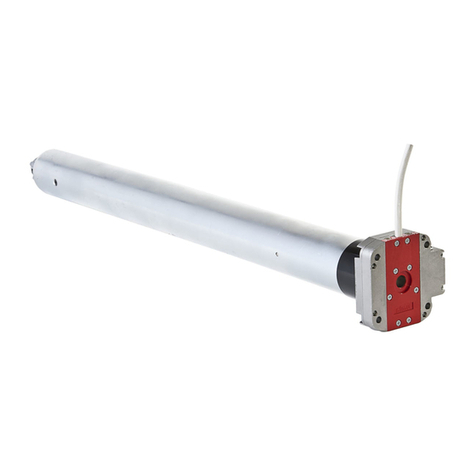
Simu
Simu DMI5 Hz User manual
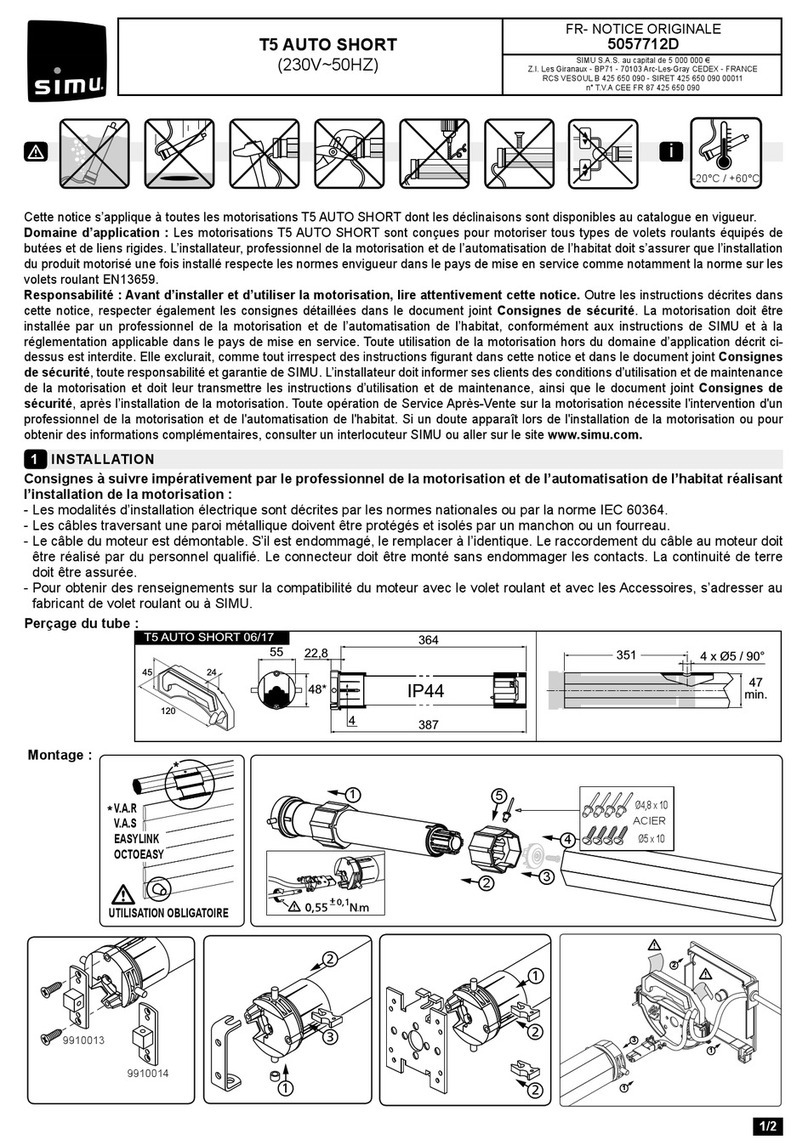
Simu
Simu 5057712D User manual
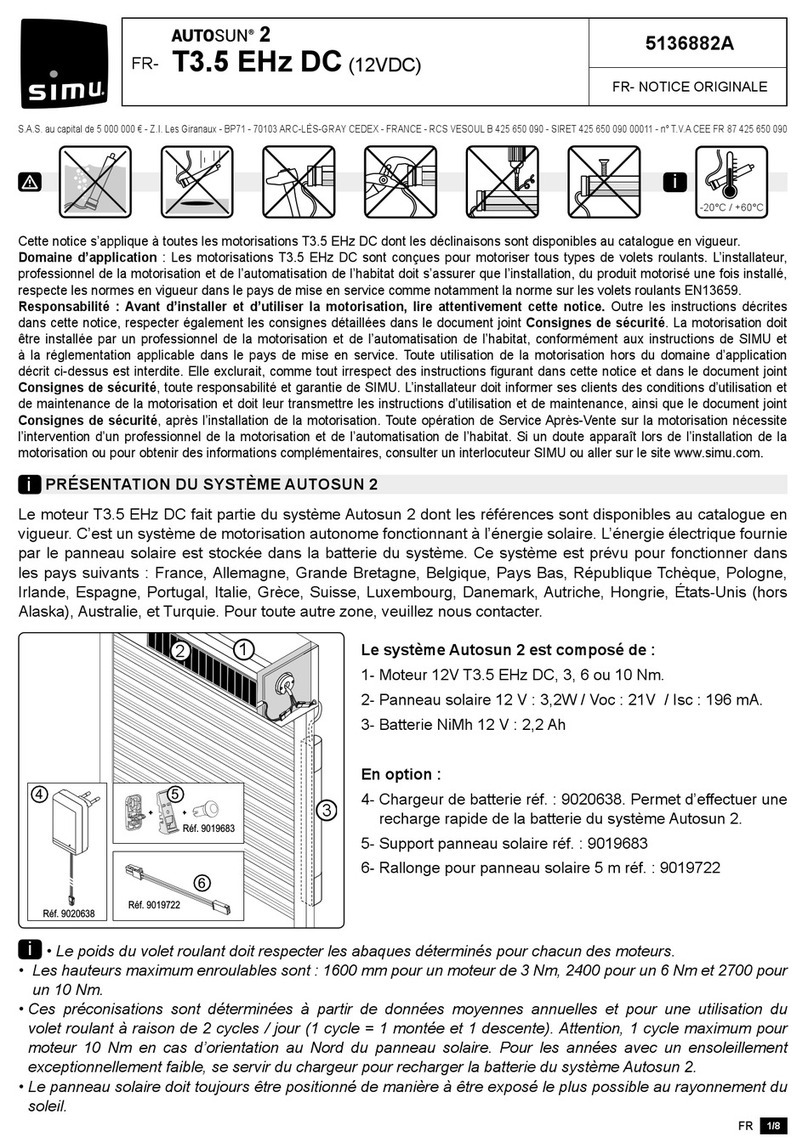
Simu
Simu Autosun 2 T3.5 EHz DC User manual

Simu
Simu T5E-SP Hz User manual
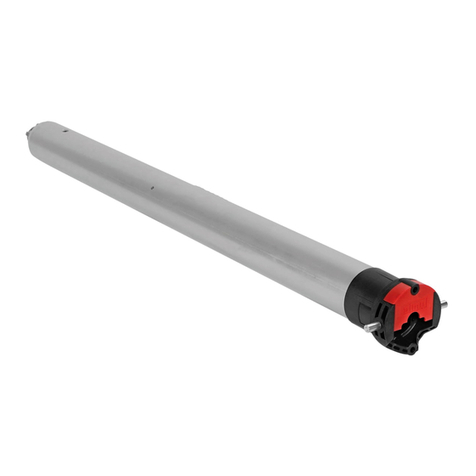
Simu
Simu T5 AUTO+JOB Series User manual

Simu
Simu T845/10 K User manual
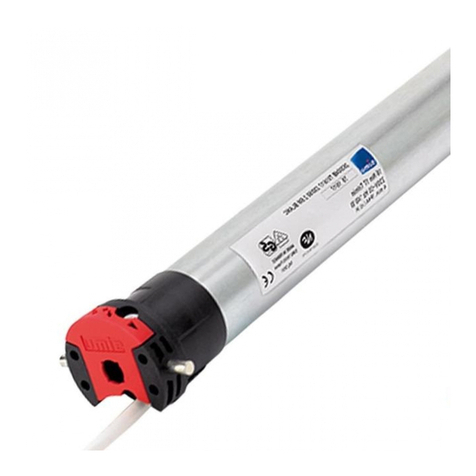
Simu
Simu T5 AUTO User manual
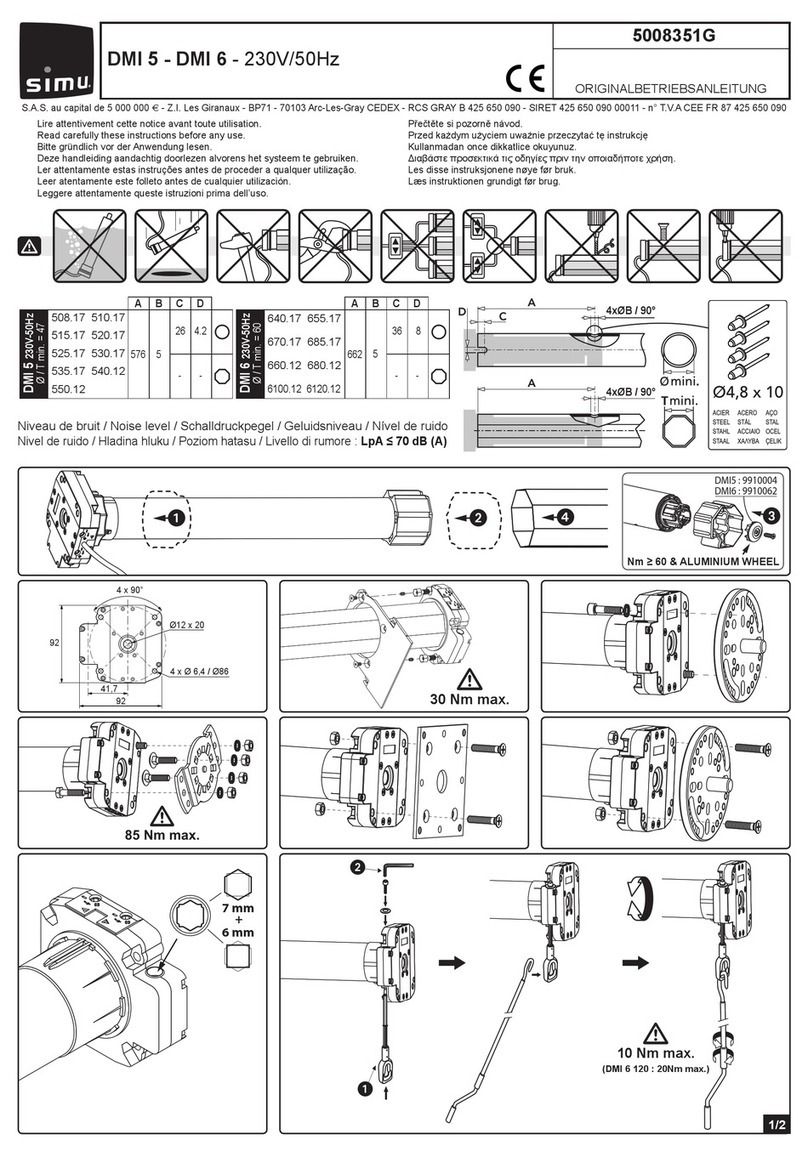
Simu
Simu DMI 6 User manual
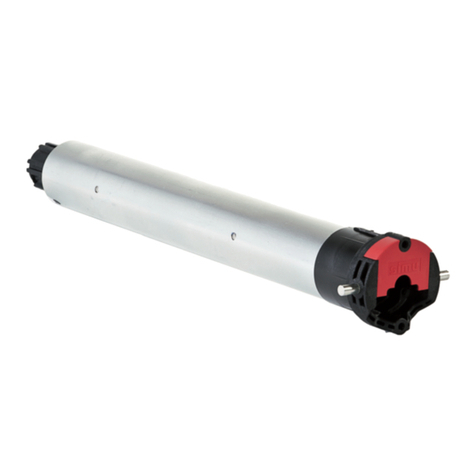
Simu
Simu T5 AUTO SHORT Hz User manual
Popular DC Drive manuals by other brands
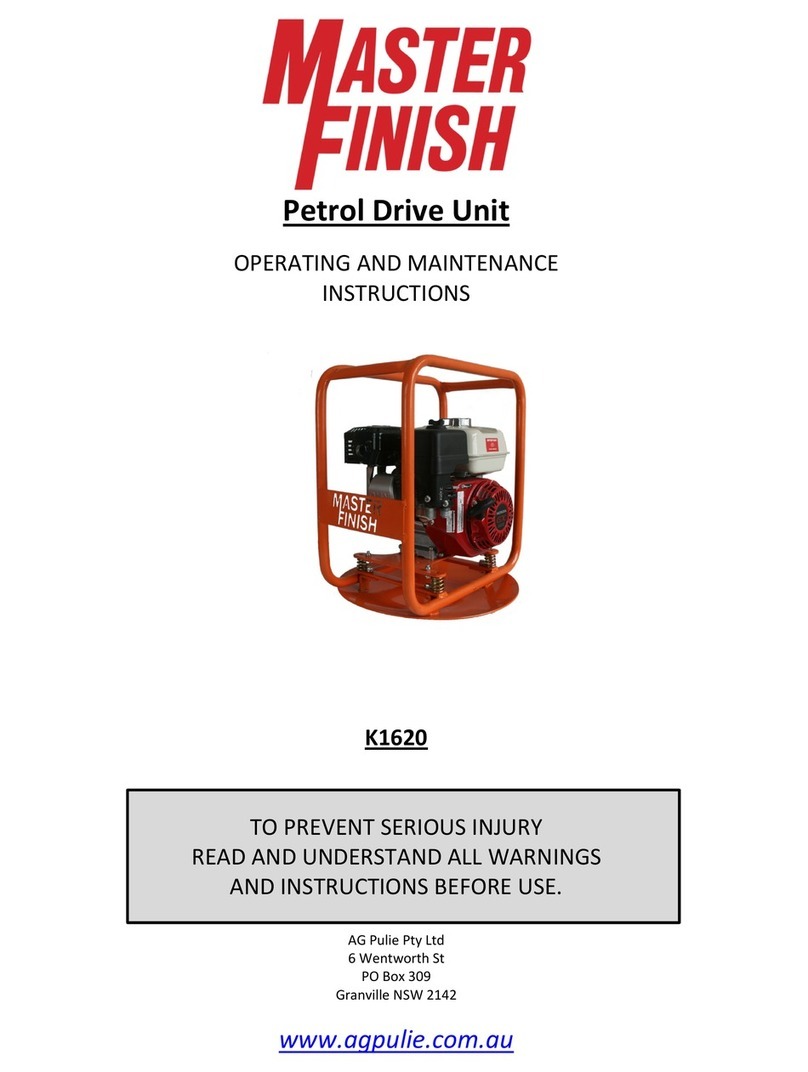
MasterFinish
MasterFinish K1620 Operating and maintenance instructions
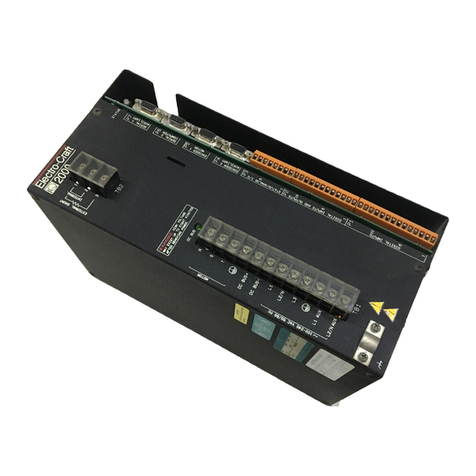
Electro-Craft
Electro-Craft IQ 2000 instruction manual
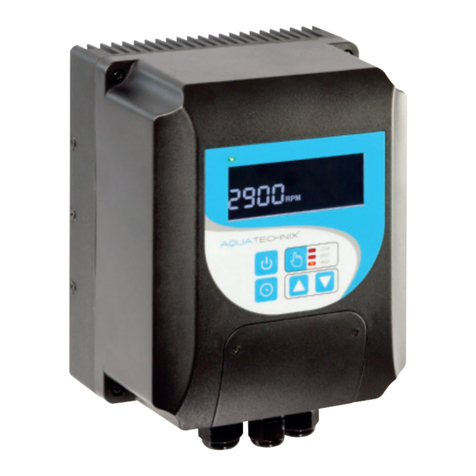
aqua technix
aqua technix Aqua Vario 1100 Original installation and operating manual

KEBCO
KEBCO COMBIVERT F4-S instruction manual

I-CAN
I-CAN BLDH1500RA user manual
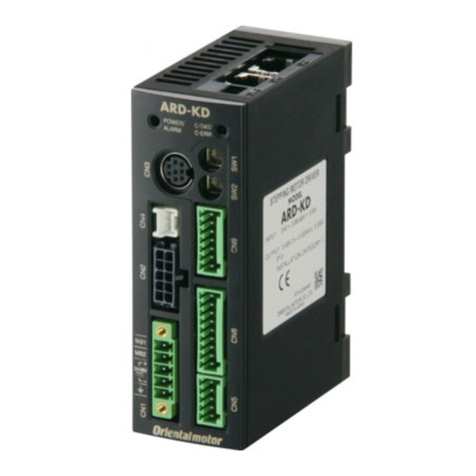
Oriental motor
Oriental motor LSD-KD operating manual
